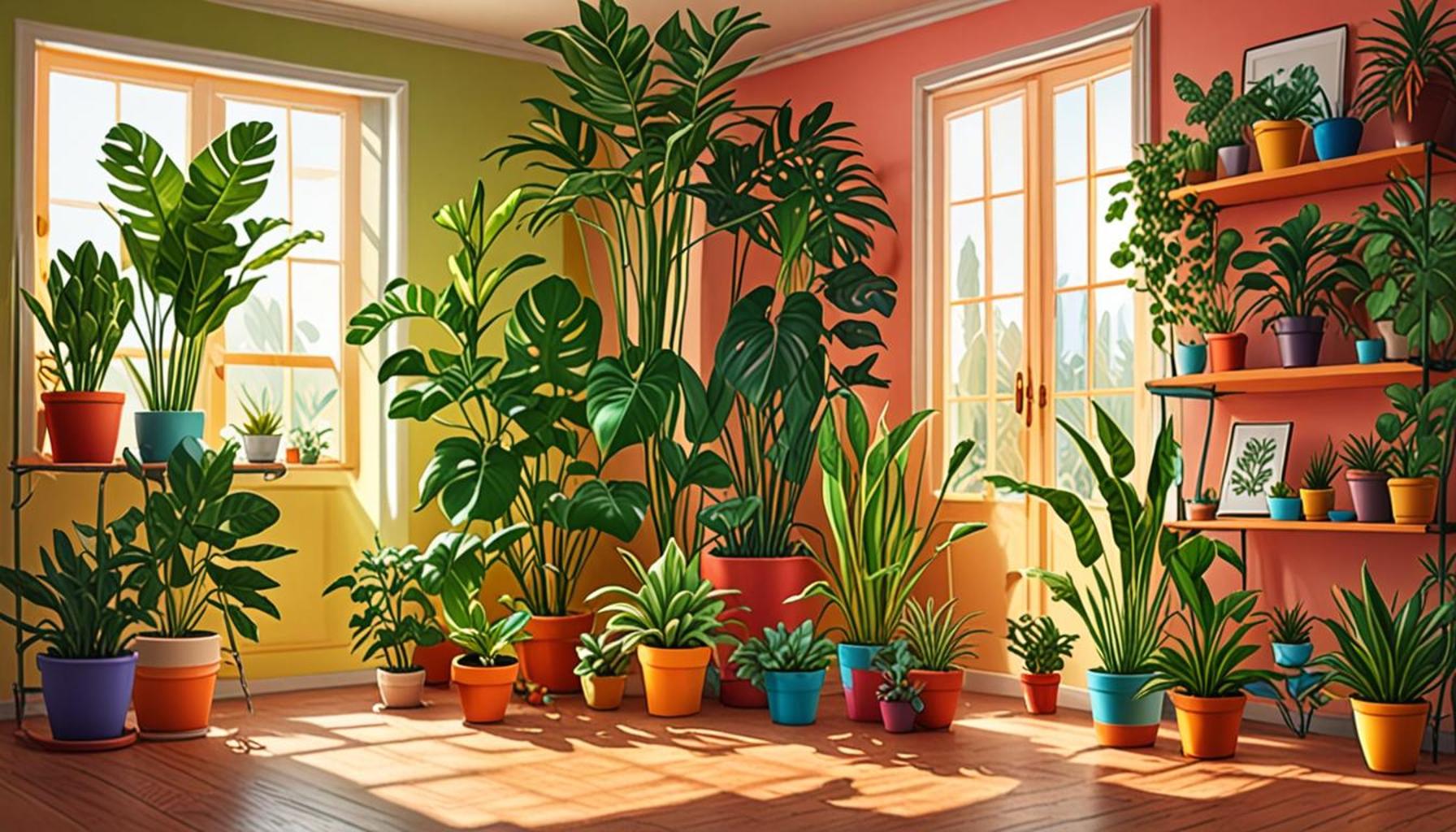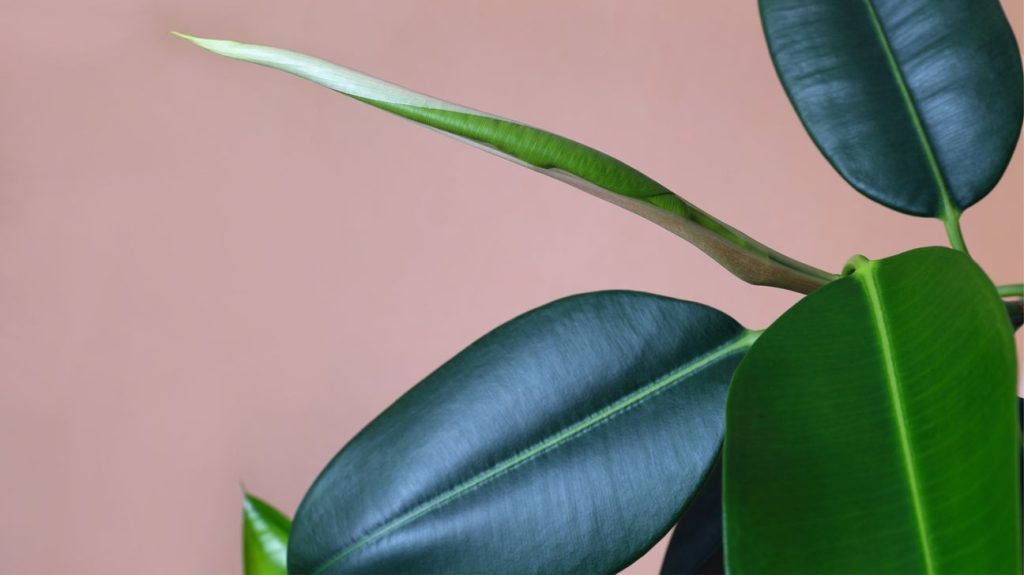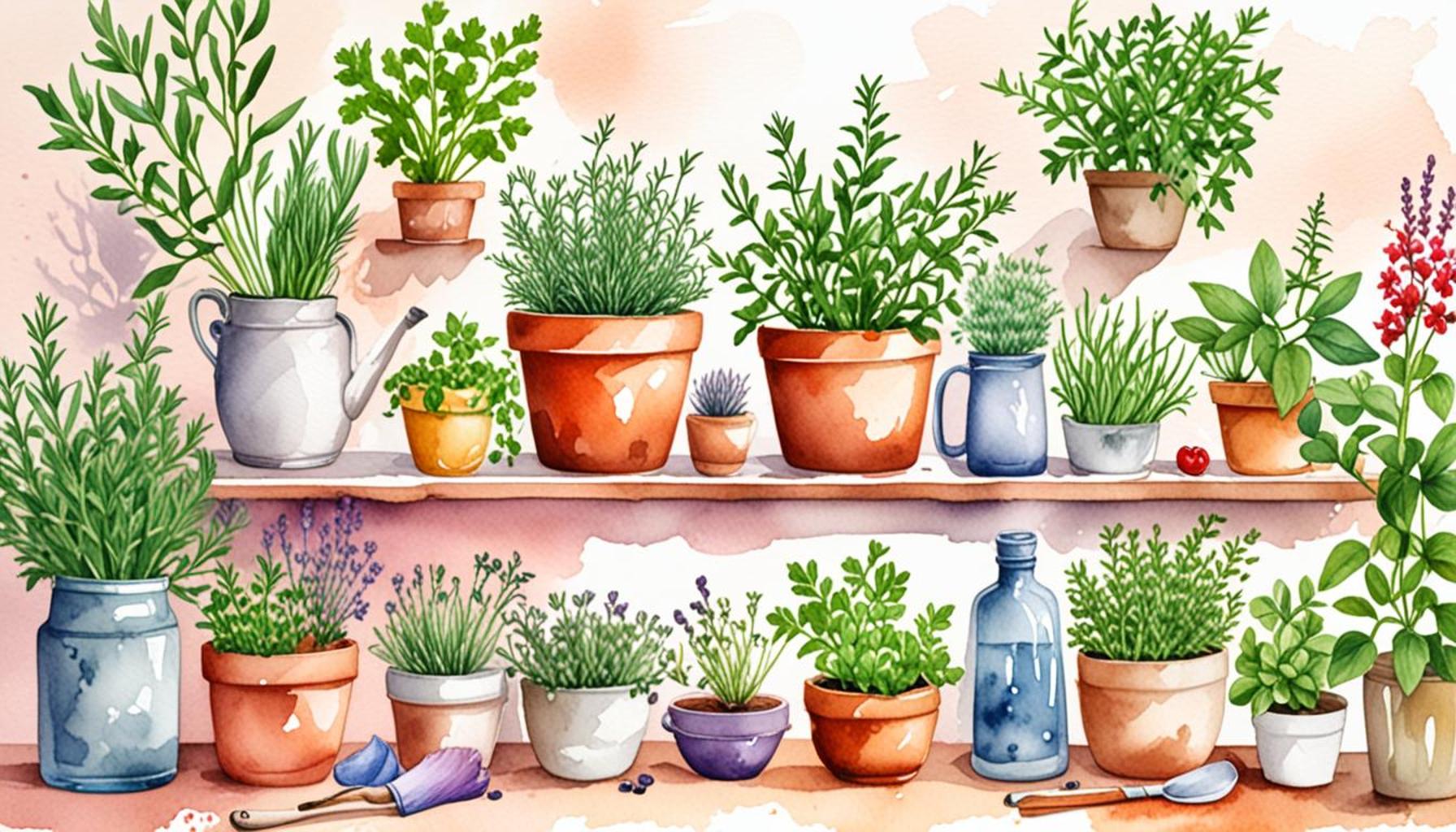How to Choose Indoor Plants for Beginners: Tips for a Healthy Environment

Incorporating indoor plants into your living environment can dramatically alter not only the aesthetic appeal of your space but also offer numerous psychological and physical benefits. Research has indicated that greenery can alleviate stress, boost mood, and even improve air quality. For those eager to embark on this journey of nurturing plants, the challenge can often lie in selecting the right species to suit personal lifestyles and home conditions.
Key Considerations
When it comes to choosing the best indoor plants, several critical factors warrant careful consideration. Understanding these elements can lead to a more satisfying gardening experience and help plants thrive.
- Light Requirements: Assessing the light conditions in your home is crucial. For instance, south-facing windows typically receive ample sunlight throughout the day, making them ideal for light-loving plants like succulents or cacti. Conversely, if your space is dim or poorly lit, consider plants like the ZZ plant or peace lily, which can survive with minimal light.
- Water Needs: Different plants have distinct water requirements. For example, the resilient snake plant is highly drought-resistant and can survive with infrequent watering, while others like the Boston fern prefer consistently moist soil. Understanding your watering habits and how much time you wish to dedicate to plant care can guide your selection effectively.
- Space Availability: The physical space in your home plays a vital role in plant selection. Larger plants like the rubber plant can grow tall and wide, making them best suited for spacious living areas. In contrast, smaller plants such as mini succulents fit perfectly on desks or shelves without overwhelming the space.
Popular Options for Beginners
If you are venturing into the world of houseplants for the first time, certain varieties are known for their hardiness and ease of care. These beginner-friendly options can provide a low-stress introduction to indoor gardening.
- Snake Plant: Also known as mother-in-law’s tongue, this plant is virtually indestructible, making it ideal for those with busy lifestyles. Its striking, upright leaves can add a modern touch to any room.
- Pothos: This verdant vine is not only durable but also fast-growing, which means you can enjoy rapid growth and lush greenery. Additionally, it is often listed among the best plants for improving indoor air quality.
- Spider Plant: Recognized for its air-purifying qualities, the spider plant is another excellent choice for beginners. Its cascading leaves filled with baby plantlets create an attractive display and it thrives in various conditions.
In conclusion, selecting the right indoor plants can significantly boost the vibrancy and healthiness of your home. By taking into account light requirements, water needs, and space availability, you can make informed choices that will enhance your living space. Take your time to explore different species, and soon you will find yourself in a thriving oasis of greenery that brings joy to your daily life.

DISCOVER MORE: Click here to learn about companion planting
Finding the Right Fit for Your Lifestyle
As a beginner diving into the world of indoor plants, it’s paramount to find species that align with your personal style and daily routine. Each plant serves not only as a decorative element but also requires specific conditions for optimal health. The journey begins by understanding several factors that can impact your success as a plant parent.
Understanding Your Environment
Before selecting your indoor plants, it is essential to assess your home environment. Different areas of your house will exhibit varying light conditions, humidity levels, and temperature fluctuations. Mapping out these factors will help steer your choices in the right direction.
- Assess Your Light Exposure: Indoor plants have distinct light preferences. Some thrive in bright, direct sunlight, while others do well in low-light conditions. Take note of where you plan to place your plants and how many hours of sunlight these spots receive. This insight will direct you toward plants like the snake plant for lower-light areas or succulents and herbs for those sunny windowsills.
- Humidity Levels: Most indoor plants prefer higher humidity levels, typical of tropical environments. If you live in a dry climate or have air conditioning that reduces humidity, opt for humidity-loving species such as calatheas or ferns. Alternatively, consider investing in a humidifier to create a more favorable environment.
- Temperature Consistency: Aim for a stable temperature between 65°F to 75°F for most indoor plants. Avoid placing plants near drafts, heaters, or air conditioning vents to mitigate stress caused by fluctuating temperatures.
Evaluate Your Care Commitment
Every plant has its own care requirements, from watering schedules to pruning needs. As a beginner, it’s essential to choose plants that match the amount of time and effort you can contribute to their well-being.
- Low-Maintenance Varieties: If your schedule is packed, consider plants like ZZ plants or pothos. They are forgiving and can withstand occasional neglect, making them perfect for novices.
- More Engaging Plants: On the flip side, if you seek a fulfilling hobby and can dedicate time, opt for plants like orchids or citrus trees, which may demand more specialized care but provide a rewarding experience in return.
By carefully evaluating your environment and the level of commitment you can offer, you can build a collection of indoor plants that flourish. This consideration will not only enhance their vitality but also ensure that you enjoy the process of nurturing them. Ultimately, the aim is to create a harmony between your living space and the greenery you choose to inhabit it, leading to a healthier environment that resonates with life and tranquility.
Understanding the Basics of Indoor Plant Care
Choosing the right indoor plants is only the beginning; understanding how to care for them is vital to ensuring their health and longevity. Indoor plants not only enhance your living space but also contribute to a healthier environment by improving air quality. Here are some essential factors to consider when starting your indoor garden.
Lighting Needs
Different plants have varied lighting requirements. Some thrive in low light, while others require bright, indirect sunlight. For beginners, it’s crucial to observe how much natural light your space receives throughout the day. Consider plants like pothos or snake plants for low-light conditions; they are forgiving and easy to care for.
Water Requirements
Overwatering is a common mistake made by new plant parents. Always check the soil moisture before watering. Many indoor plants prefer their soil to dry out between waterings. As a general rule, if the top inch of soil is dry, it’s time to irrigate. This practice not only prevents root rot but also encourages strong root development.
Humidity and Temperature
Indoor environments often lack the humidity levels that many plants prefer. Consider misting your plants or placing a humidifier nearby to maintain optimal conditions. Most houseplants thrive at temperatures between 65°F and 75°F, so keep them away from drafty windows or heating vents that can disrupt their growth.
Fertilization
Indoor plants require nutrients to flourish, especially during the growing season (spring and summer). A balanced, water-soluble fertilizer can be used every month to ensure they have the necessary nutrients during this period. However, it’s essential to follow product instructions to avoid over-fertilizing.
| Category 1 | Category 2 |
|---|---|
| Lighting Needs | Certain plants thrive in specific lighting conditions, impacting their growth. |
| Watering Techniques | Understanding soil moisture can prevent overwatering and promote healthier plants. |
As you delve deeper into plant care, it becomes a fulfilling hobby, improving your indoor environment and providing natural beauty. With careful attention to these fundamental aspects, even beginners can enjoy a thriving indoor garden.
DISCOVER MORE: Click here to learn about the importance of organic matter in soil health
Choosing the Right Plant Species
Once you’ve evaluated your environment and care commitment, the next step is selecting the right plant species. With a dizzying array of options available, it’s crucial to narrow down your choices to ensure a successful indoor gardening experience. Here are some popular indoor plant species that are beginner-friendly and thrive in various conditions.
Embrace Resilient Species
Beginner gardeners often benefit from starting with resilient species that can withstand common pitfalls associated with new plant care. Consider the following:
- Spider Plant: A classic choice, spider plants are adaptable to various light conditions and are forgiving when it comes to watering. They are also known for their ability to purify the air, making them an excellent addition for a healthier home environment.
- Pothos: This vine is world-renowned for its exceptionally forgiving nature. With its ability to thrive in low light and tolerate missed watering, pothos is the ideal option for busy beginners. Plus, its trailing vines make for stunning displays in hanging pots.
- Peace Lily: If you desire blooms, the peace lily offers elegant white flowers along with air-purifying qualities. It thrives in low light and only requires watering when the soil feels dry, making it a fantastic choice for those who may forget the occasional watering.
Consider Your Space
Your living space and its aesthetic will significantly influence your plant choices. It’s worthwhile to think about how different plants will complement your home decor while providing the benefits of greenery. Some popular options include:
- Fiddle Leaf Fig: This trendy tree can become a statement piece in any room with its large, violin-shaped leaves. It does require bright, indirect light, but when cared for correctly, it adds a touch of elegance to your space.
- Succulents: Known for their varied shapes and sizes, succulents fit beautifully on windowsills, desks, or small tables. These drought-resistant plants need minimal care, requiring watering only when the soil is completely dry, making them perfect for beginners with limited time.
- Rubber Plant: With glossy, dark green leaves, the rubber plant not only enhances your decor but also grows well in a variety of lighting situations. It can reach impressive heights, allowing it to serve as a dramatic focal point in your home.
Explore Specialty Plants
<p>If you feel ready to venture beyond common houseplants, consider exploring specialty plants that add unique flair to your collection. Options like air plants and carnivorous plants can intrigue visitors and spark conversation. While they may require slightly more attention, their distinctive traits can be well worth the effort.
- Air Plants: These fascinating plants do not require soil and can be placed in creative locations, from mounted on walls to fit into decorative containers. They thrive with periodic misting and soaking, which makes them an engaging choice for creative plant care.
- Venus Flytrap: An exciting option for those who wish to attract attention, these carnivorous plants need bright light and high humidity. They provide an intriguing twist to traditional plant care, appealing to beginners eager for novelty.
By considering various species tailored to your unique environment and lifestyle, you set the stage for a thriving indoor garden. Selecting the right plants not only beautifies your space but can also lead to a rewarding hobby filled with joy and satisfaction as you witness your green companions flourish.
LEARN MORE: Click here for essential tips on drainage
Conclusion
Choosing indoor plants can be an enriching journey that transforms your living space into a vibrant sanctuary. By following the tips outlined in this guide, you can confidently select the right species that will thrive in your unique environment and suit your lifestyle. Understanding your space and committing to the appropriate care allows even beginners to cultivate a lush indoor garden.
From the resilient spider plant to the visually striking fiddle leaf fig, the variety of plants available today ensures there’s something for everyone, irrespective of experience. As you become familiar with the care each plant requires, you’ll find satisfaction not only in their growth but also in the ambiance they create within your home.
Moreover, exploring specialty plants like air plants or carnivorous varieties can add an exciting twist to your collection, sparking conversation and curiosity. Remember, caring for indoor plants also brings numerous health benefits, such as improved air quality and a calming atmosphere that promotes overall well-being.
Ultimately, the most important consideration is to enjoy the process. Allow yourself the space to learn and grow alongside your plants. With each leaf and blossom, you’ll discover insights that enhance not just your indoor environment but also your appreciation for nature. Happy planting!


